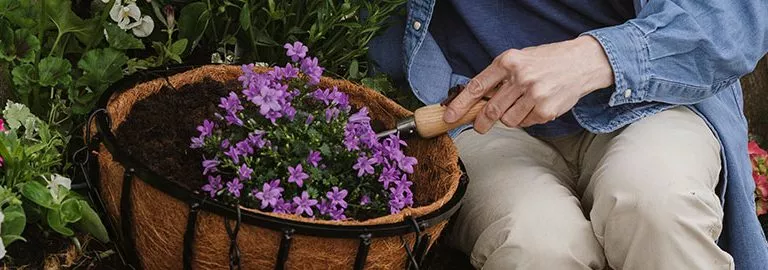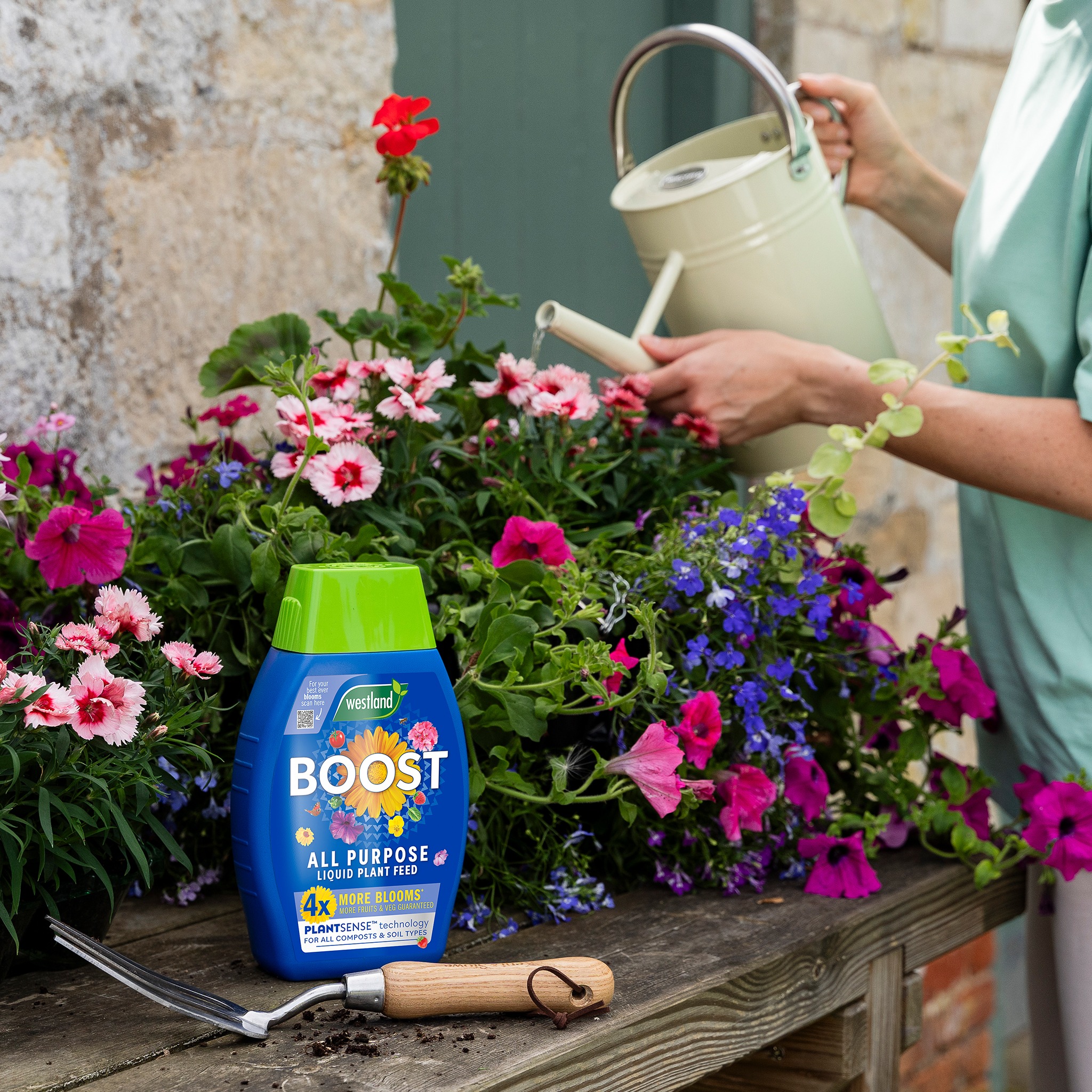May Gardening Advice
May is the month when the cooler, wetter days of spring have ended. The temperature is rising, and the warmth of summer is just around the corner.
All that sunshine and rain means that plant growth is speeding up and flowers are beginning to bloom, bringing bursts of vibrant colour to the garden. Of course, this means lots of gardening jobs in May to keep your outdoor spaces looking tidy. But with the longer, warmer days, it’s the perfect time to be outside enjoying the fresh air.
May is here, and spring is starting to come to an end, whilst summer is getting closer. This month is when plant growth seems to speed up and everything comes into bloom. There is a lot of gardening to do in May to keep your garden looking tidy, to get it ready for the summer months. You should start to see a difference in the weather, with more sunshine and slowly rising temperatures. This means there are lots of opportunities for you to be out in the garden.
Gardening Jobs Checklist
Plant Up Baskets, Pots, and Containers
May is the perfect time to plant up pots and containers for a vibrant summer display. With the risk of frost largely passed, you can now confidently fill your containers with a mix of colourful bedding plants, trailing varieties, and structural foliage for lasting impact. Popular choices for pots include petunias, calibrachoa, lobelia, begonias, and fuchsias, which all offer long-lasting blooms and thrive in containers.
Choose a high quality compost that is tailored for pots and containers, such as Boost All Purpose Compost. It is peat-free, enriched with starter feed, and includes our moisture lock technology to make watering more effective and easier. This compost is perfect for all containers and baskets, giving them the boost they need for stunning, vibrant floral displays.
Next, work a handful of Boost All Purpose Multi-Action Granules into the compost. These nutrient-packed granules strengthen roots, promote greener foliage, and provide up to 6 months of slow-release feeding to enhance overall plant health. With its high potassium content, you’ll enjoy more blooms, fruits, and vegetables throughout the growing season.
When planting, think about combining plants with different heights and habits for a full, cascading effect. This is often called the “thriller, filler, spiller” method. Use a tall or bold plant as the central feature (like a canna or ornamental grass). Surround it with mid-sized, bushy plants, and finish with trailing varieties to spill over the edges. Once planted, water and feed thoroughly. Place your pots in a sunny, sheltered spot. Feed every time you water throughout summer with Boost All Purpose Plant Feed. This will produce four times more blooms compared to watering alone. More fruit and veg are also guaranteed.
Regular deadheading and feeding will keep your containers looking their best well into late summer.
Top Tip: Add pieces of broken plant pots to the bottom of any containers and hanging baskets you’re using to help improve the drainage. Keep an eye on the forecast and protect your pots or hanging baskets if frost is likely.
For more information on container gardening, read our handy guide.
Mow and Feed the Lawn
Lawn care is an important task when gardening in May. May is a month of fast growth for lawns, making regular mowing essential to keep your grass healthy and looking neat. Aim to mow once a week, but avoid cutting the grass too short—this can stress the lawn and encourage weeds and moss to take hold. Instead, follow the “one-third rule”: never remove more than a third of the grass height in one go.
Now’s also the ideal time to feed your lawn with a dedicated spring lawn fertiliser such as Westland SafeLawn. This is an excellent choice if you’re looking for a natural, child and pet friendly feed that greens your lawn and prevents weeds and moss too.
For lawns that need a more intensive treatment, Aftercut All In One Lawn Feed, Weed & Moss Killer is an excellent choice. This triple action lawn treatment not only greens and feeds your lawn but also effectively eliminates weeds and moss.
After applying any lawn treatment, water well if rain isn’t forecast and try to keep off the lawn until the product has fully worked its way in. With consistent mowing and the right care products, your lawn will stay looking lush and vibrant all season long.
Watch our video below to find out more about feeding your lawn.
Plant Out Summer Bedding
Now that the risk of frost is mostly behind us, it’s time to plant out summer bedding plants such as petunias, geraniums, marigolds, and begonias. These will provide vibrant colour right through the season. Harden them off first if they’ve been grown indoors.
Plants that are raised indoors are delicate and need to be gently acclimatised to cooler outside temperatures before you can plant them outside; this process is called ‘hardening off’. With warmer summer days, May is the perfect month to do this.
Start hardening off by bringing your plants out of the greenhouse during the day. Return them inside during the cooler evenings; this should be done for seven days. After a week, you can start to leave them outside during the night. Make sure you cover them with fleece, so they don’t get too cold; this should be continued for seven days. You can now plant them outside as they will be hardy enough to withstand the cooler nights. Just keep an eye on the forecast and avoid planting out until the risk of frost has passed.
Top tip: Water well after planting and keep an eye out for slugs, especially in the early stages.
Keep on Top of Weeds
As temperatures rise in May, weeds can become a real nuisance, popping up in beds, borders, pathways, and even between paving slabs. If left unchecked, they can quickly spread and compete with your garden plants for vital resources like water, light, and nutrients. Tackling them now, while they’re still young and manageable, will save you time and effort later in the season.
Make weeding a regular part of your weekly May gardening routine. Aim to remove the entire root where possible to prevent regrowth. You can use a good weedkiller like Resolva Xtra Fast that works by contact action and targets weeds within 3 hours, so your outdoor space will look tidy and fresh again in no time.
As an alternative, non-chemical option, you can also use a weeding hoe that is invaluable for slicing through the soil and lifting out weeds with minimal disturbance to nearby plants. Mulching around your plants after weeding can also help suppress new growth by blocking sunlight from reaching weed seeds.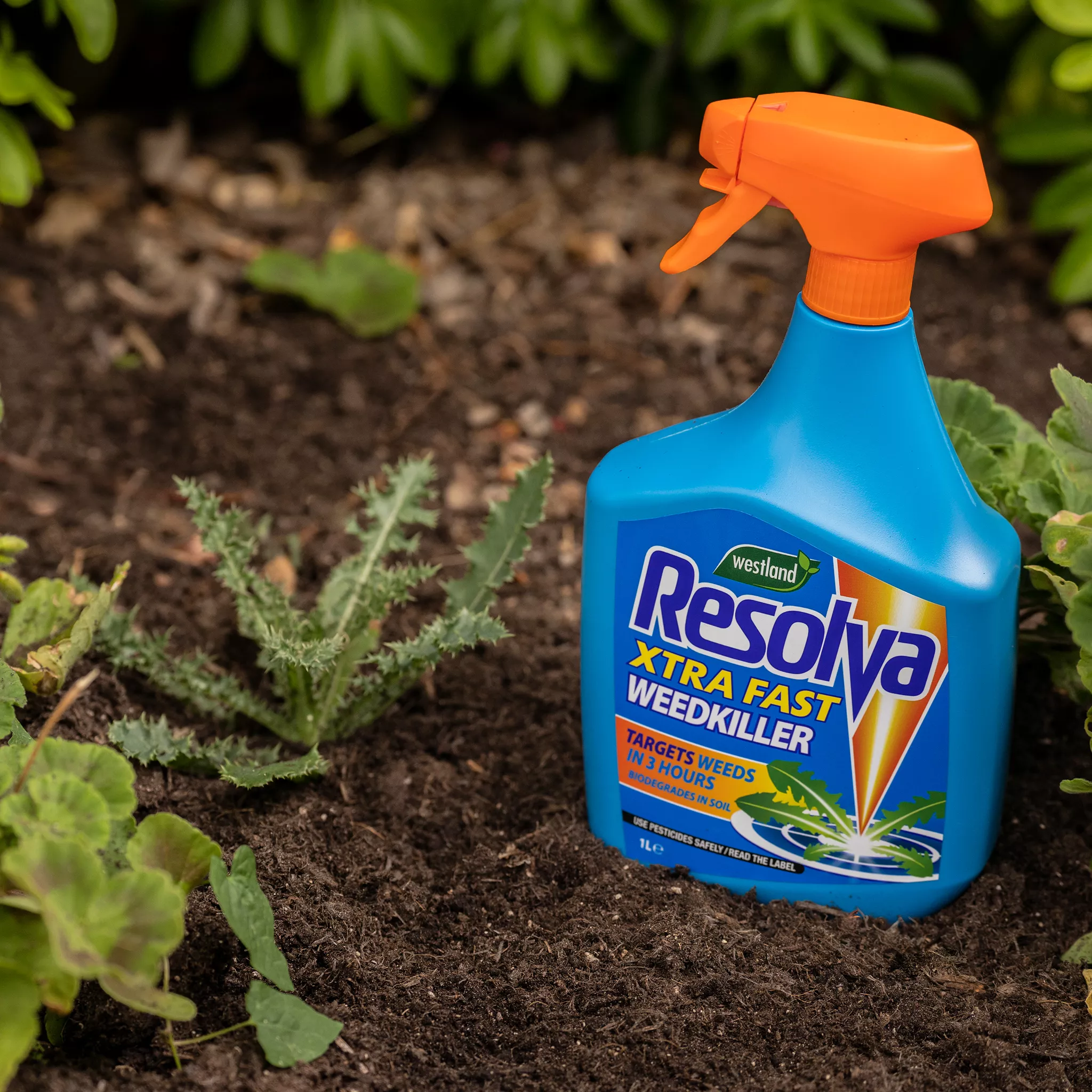
Tidy up Perennials
In May, it’s a great time to tidy up your perennials and give them a fresh start for the growing season. Begin by cutting back any remaining dead stems or foliage from last year’s growth using sharp perennial snips. Clearing away this debris not only improves the appearance of your borders but also helps prevent pests and diseases from taking hold.
You can also use a perennial spade to divide and replant overcrowded clumps of perennials like hostas, geraniums, or daylilies to rejuvenate them and encourage more vigorous flowering. Don’t forget to mulch around the base of your perennials after tidying – they’ll appreciate the moisture retention and added nutrients as temperatures rise.
If you have any tall, floppy plants, add supports around them to prevent them from becoming too tall and bushy – there is a wide range of ready-made supports available do this.

Sow Veggies for Summer Harvests
Wondering what you can plant in May? If you plan on growing runner beans from seed, now’s the time to start planting them in the garden. When preparing the trenches, add supports so that the plants can grow up them. It’s worth adding a few extra seeds around each support just in case hungry pests eat any of the seedlings. As the seedlings begin to grow, thin out the weakest ones to allow the healthier, stronger ones to harness the nutrients in the soil.
Sweetcorn seeds can also be planted now; choose a warmish, sheltered site for these as sweetcorn is relatively delicate when growing. Always plant the sweetcorn in blocks of at least 12 plants, as this vegetable is wind-pollinated.
Use a dibber to make your sowing life easier! This dibber has a sharp, stainless steel tip that enables smooth and easy entry into the soil, allowing you to make consistent holes for your seeds.
You can also plant these vegetable seeds in May:
- Beetroot – Quick and easy to grow, great for salads and roasting.
- Carrots – Sow little and often for a continuous crop through summer.
- Lettuce & salad leaves – Choose cut-and-come-again varieties for repeat harvests.
- Radishes – Fast-growing and perfect for intercropping between slower veg.
- Spring onions – A versatile salad crop that doesn’t need much space.
- Swiss chard – Vibrant leaves that keep cropping throughout the season.
- Turnips – Harvest young for tender roots.
- Peas – Mange tout and sugar snap types are perfect for quick summer snacks.
If you have a greenhouse or a warm, sunny spot, you can also start cucumbers, tomatoes, and peppers in pots or growbags.
Tip: Protect carrot and cabbage sowings with a fine mesh to prevent attack from pests.
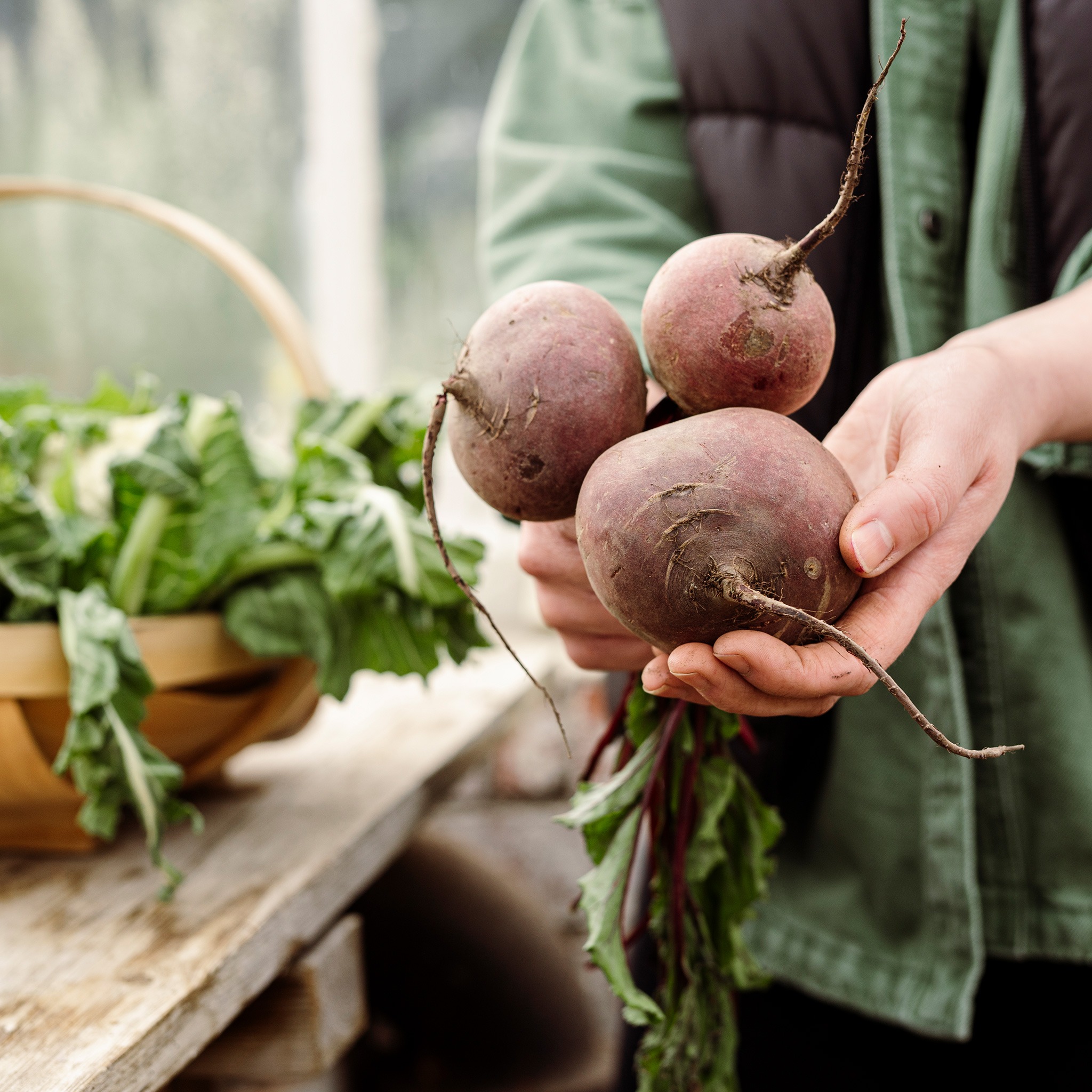
Keep on Top of Pests, Slugs, and Snails
Warmer weather brings an uptick in pests like aphids, vine weevils, and slugs. Check the undersides of leaves regularly and take action early. There are lots of products to keep all kinds of pests at bay; see our full range here. If you have a slug problem, use a product such as Growing Success Slug Killer*, which contains a naturally occurring ingredient and can be used to protect all edible and non-edible plants.
How to control slugs and snails naturally
If you’re looking to control slugs and snails without poison, there are a few things you can do:
- Use a copper-based tape like Growing Success Slug Barrier around pots to prevent slugs and snails from being able to access the plant.
- During the autumn, rake over the soil and dispose of dead leaves, as this will help to bring slug eggs to the surface, which can then be eaten by birds
- Make a natural slug trap by scooping out an orange, melon, or grapefruit and placing it by the plant; check the peel every morning and remove any slugs you find on it
- Damp weather is perfect for slugs; as the sun is going down, look around containers, borders, paths, and patios and remove any slugs you find by hand, placing them into a bowl or jar. You can then re-home them away from your garden.
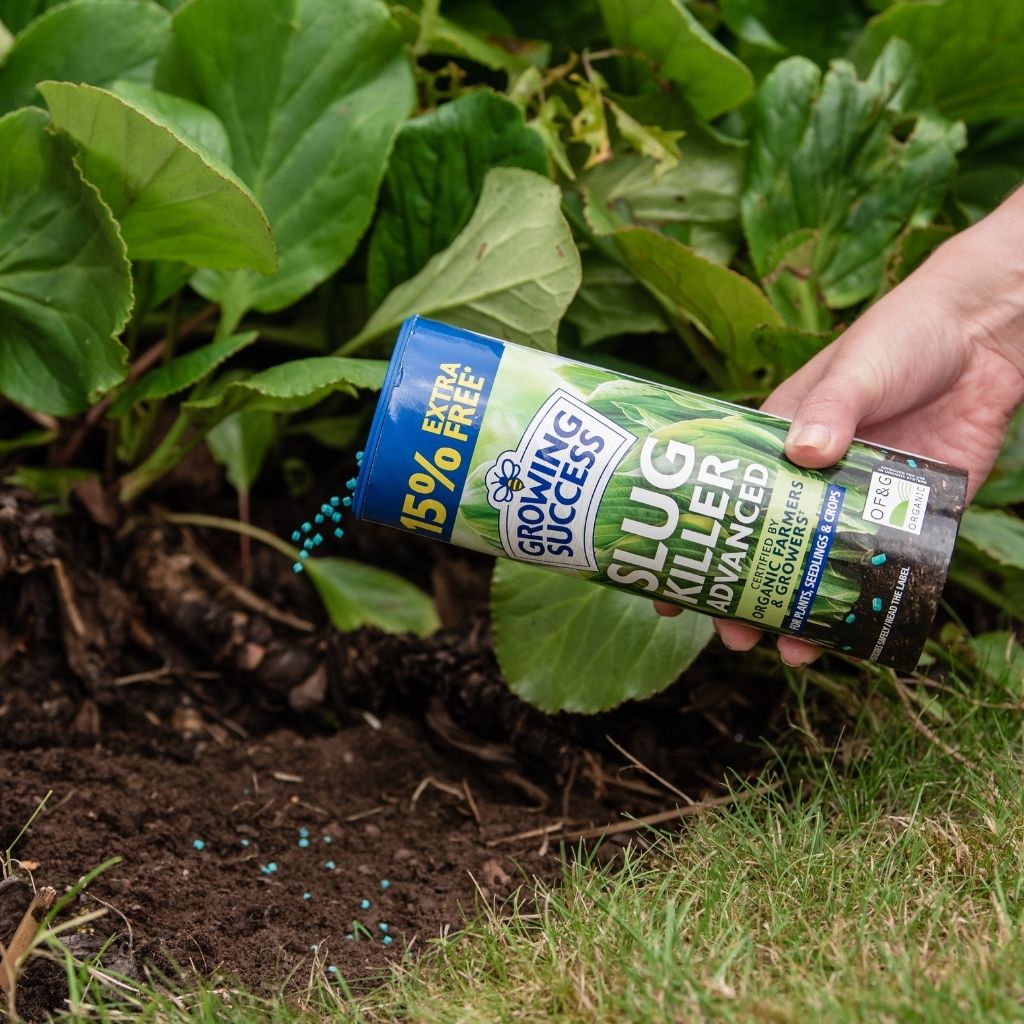
Water Wisely
As the days grow warmer and sunlight becomes more intense, keeping your plants properly hydrated becomes increasingly important. Consistent watering supports healthy growth, encourages flowering and fruiting, and helps plants stay resilient during dry spells. To make the most of your efforts, it’s best to water either early in the morning or later in the evening. This avoids the hottest part of the day when water can quickly evaporate from the soil surface, and it gives plants time to absorb the moisture before the sun is at its strongest.
When watering, try to target the base of your plants rather than the leaves. This ensures the roots, where the moisture is needed most, receive the benefit, and it also helps prevent fungal diseases, which can thrive in damp foliage. For containers, baskets, and thirsty crops like tomatoes and courgettes, regular checking is key – these may need watering daily in warm conditions.
To help reduce the need for frequent watering, apply a layer of mulch around the base of your plants. Organic mulches like compost, bark chips, or well-rotted manure help to lock in moisture, suppress weeds, and improve soil structure over time. In pots and containers, you can also mix in Boost All Purpose Multi-Action Granules when planting to hold moisture in the compost. With a little planning and care, your plants will stay happy and hydrated all summer long.

Last chance jobs for May Gardening
Bulbs to plant in May
With the summer nearly upon us, if you haven’t finished planting your summer flowering bulbs such as dahlias and gladioli, this is really the last opportunity you’ll have.
Check that your bulbs are healthy and throw away any that are rotting or soft to the touch.
Sow half-hardy annuals
There’s still time to sow hardy annual seeds such as sunflowers directly where you want them to flower. Prepare the ground by removing all the weeds in the area so that the young seedlings don’t have to compete against the weeds. For more information on growing sunflowers from seed, read our guide.
*Use plant protection products safely. Always read the label and product information before use.
Aftercut All In One Lawn Feed Weed and Moss Killer contains 2,4-D, Mecoprop-P, Dicamba and Ferrous Sulphate. Use plant protection products safely. Always read the label and product information before use

